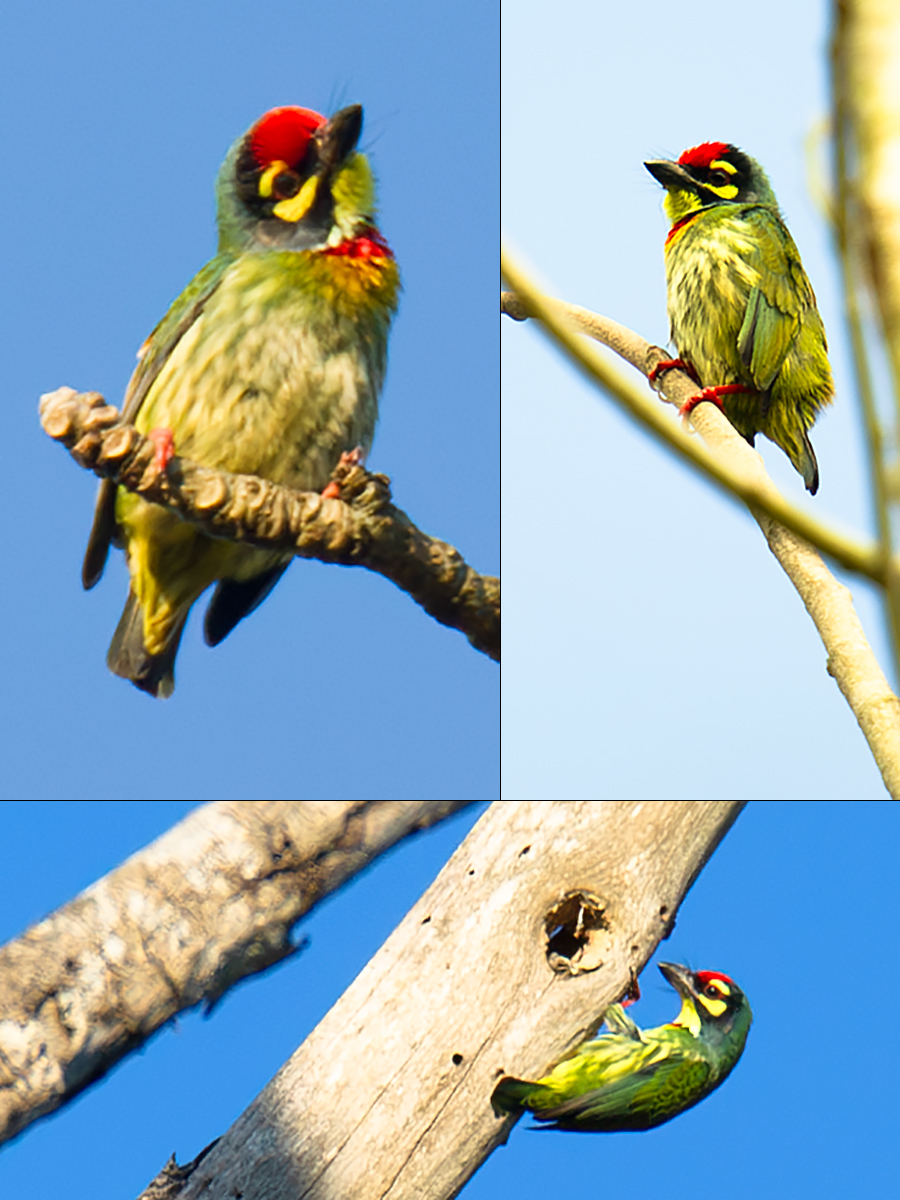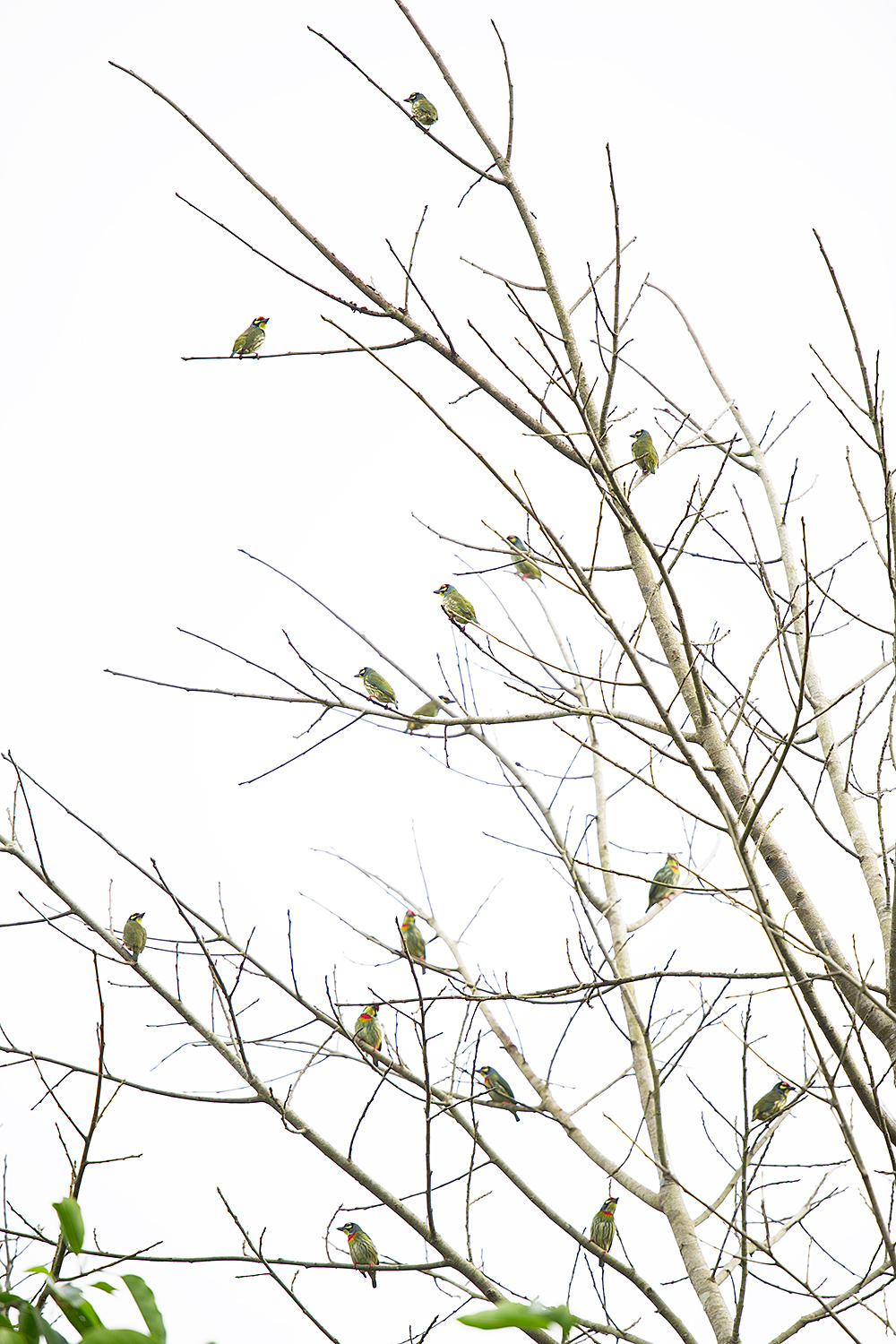

In China, Coppersmith Barbet Psilopogon haemacephalus indicus is resident in south (Xishuangbanna) and southwest (Ruili) Yunnan. HABITAT & BEHAVIOR Unlike other Asian barbets, is well-adapted to life outside forest, being very much at home in open, wooded country, scrub, and parks and gardens, to 1000 m (3,280 ft.). Congregates in small flocks in early morning, sunbathing on bare branches. Eats fruit and insects, sometimes catching them in flight. Cavity nester. ID The smallest barbet. Has crimson breast patch and forecrown, mustard-yellow throat, and patches above and below eye. Strong black moustachial stripe and eyeline join black hindcrown. Greyish sides of neck reach hindcrown. Upperparts dark green; underparts yellowish with dark, blotchy streaks; tail bluish-green. Juvenile mostly greenish but has yellow and black facial markings of adults. BARE PARTS Dark eye and red eye-ring. Bill black, with rictal bristles; zygodactyl feet red. VOICE Song a pulsing, clear, hollow whistle or hoot, repeated continuously. — Craig Brelsford
THE ASIAN BARBETS OF CHINA
shanghaibirding.com has research on all eight species of Asian barbet in China. Click any link:
Great Barbet Psilopogon virens
Lineated Barbet P. lineatus
Green-eared Barbet P. faiostrictus
Golden-throated Barbet P. franklinii
Chinese Barbet P. faber
Blue-throated Barbet P. asiaticus
Blue-eared Barbet P. cyanotis
Coppersmith Barbet P. haemacephalus
See also:
Taiwan Barbet Psilopogon nuchalis
ACKNOWLEDGEMENTS
Daniel Bengtsson served as chief ornithological consultant for Craig Brelsford’s Photographic Field Guide to the Birds of China, from which this species description is drawn.
